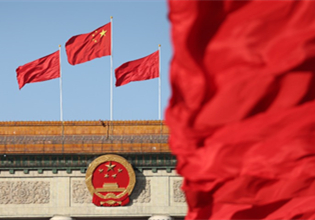Inner Mongolia plans to be national new energy hub
North China's Inner Mongolia autonomous region aims to become a new national energy hub, according to discussions that took place at the 11th CPC Inner Mongolia Autonomous Regional Congress, which was held from Nov 27 to 30.
According to the plan, Inner Mongolia will take the lead in establishing an energy supply system with new energy making up the bulk of the energy mix.
Four industry clusters involving wind, photovoltaic, and hydrogen energy – as well as energy storage facilities, will start to take shape in Inner Mongolia during the 14th Five-Year Plan period (2021-25).
The autonomous region plans to support Baotou and Wuhai cities to set up hydrogen ironmaking demonstration projects.
By 2025, it is projected that the region will have achieved a green hydrogen production capacity of more than 500,000 metric tons and be home to 100 hydrogen refueling stations. In addition, Inner Mongolia's new energy will become the main energy source for the increase in installed power capacity, with new energy generating capacity accounting for more than 45 percent of the total. The plan is expected to reduce carbon dioxide emissions by about 200 million tons per year.
Meanwhile, Inner Mongolia will build new energy bases together generating tens of millions of kilowatts in Alshaa League, as well as Baotou, Ordos, Bayannuur and Ulaanqab cities to promote the large-scale development of wind and photovoltaic power stations in the region.
According to the latest statistics from the Department of Industry and Information Technology, Inner Mongolia's wind power and photovoltaic power generation currently rank first in the country; and the region also has more installed new energy capacity than anywhere else in China.



 Print
Print Mail
Mail





